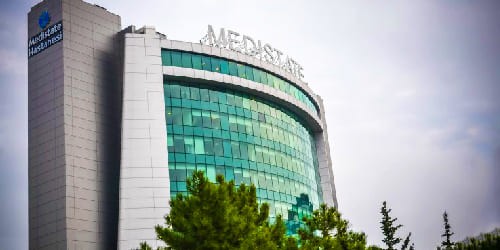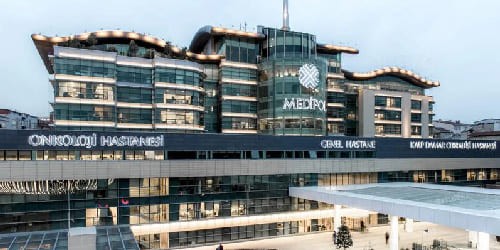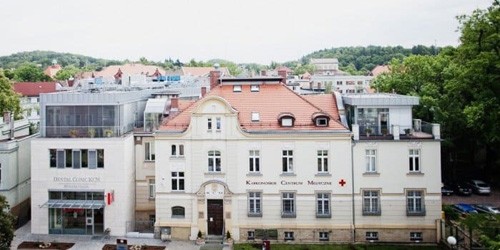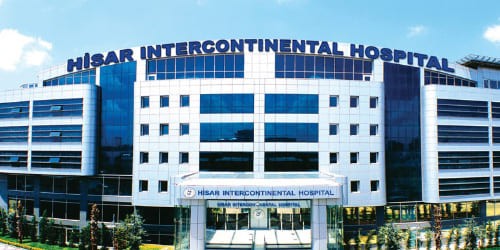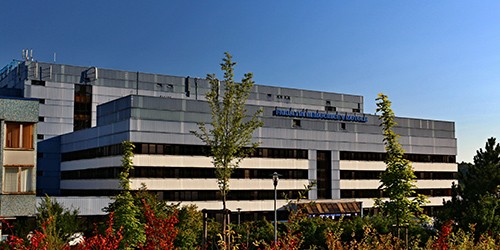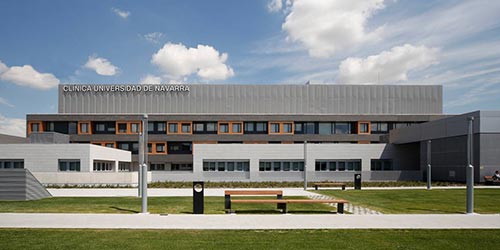1. Proton therapy for prostate cancer |
2. How does the procedure work? |
3. Treatment efficacy |
4. Possible complications |
5. Cost of treatment |
6. Leading clinics |
Prostate cancer is the second most common malignant disease among men and the fourth most common cancer overall. Each year there are more than 1,4 million new cases of the disease and around 400,000 deaths from it. Therefore, the development and implementation of new solutions in the treatment of prostate cancer is an important challenge for global medicine. Proton therapy is an effective option in fighting the disease. It is a non-invasive external radiation therapy, which targets pathological cells and destroys their DNA as precisely as possible. The risk of damage to healthy tissue is minimal. Read more about this cancer therapy in our article.
Listen to the article:
Proton therapy for prostate cancer
Proton therapy is an effective way to treat prostate cancer. It can improve the prospects of many patients with the disease. It is a form of radiotherapy that uses focused beams of proton particles to destroy cancer cells.
Protons are ‘tuned’ so that they penetrate a certain distance and stop at the tumour. This makes it possible to deliver the right doses of radiation to different parts of the malignant tumour and destroy it.
Proton therapy
Proton therapy was approved by the Food and Drug Administration (FDA) to fight cancer in 1988. It can be combined with other cancer treatment options, such as chemotherapy or surgery.
In the case of prostate cancer, proton therapy can be used at different stages of the disease, in particular for tumours with metastases in lymph nodes or other organs. More than 800 clinical trials in proton therapy have now been published, and this number is increasing every year.
The procedure is quick, painless and leads to virtually no serious side effects in most patients. It is associated with a low risk of recurrence and does not affect testosterone levels.
To find out more about your options for fighting prostate cancer with proton therapy, click on the button below and fill in the feedback form. Our experts will answer all your medical questions and assist you with travel arrangements for your treatment abroad.
How is prostate cancer treated with proton therapy?
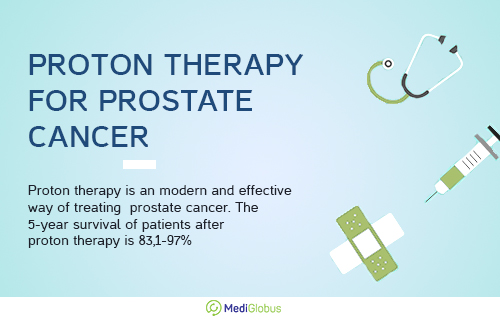
Proton therapy does not require anaesthesia. Irradiation lasts about 5-15 minutes, and the entire procedure takes about 45 minutes in total. Most of the time is spent setting up the proton device.
The course of treatment is different for each patient. It depends on the severity of the illness, previous treatment options and the age and general condition of the patient. Generally, about 5 sessions a week for 1-2 months are needed.
Proton therapy takes place in several stages. The first is the preparation for the procedure itself. This involves an MRI or CT scan to obtain clear images showing the exact location of the tumour and its size. These images are used to plan the treatment, calculate the dose, number of sessions, and create a marker to guide the beam.
A repeat CT or MRI scan is performed on the day of the procedure. This is to make sure that the patient is positioned correctly. During a proton therapy session, he or she lies on a treatment table. A special machine is used to irradiate specific areas. After the treatment, the patient can leave the clinic on the same day and go about their daily activities. No special rehabilitation is required after proton therapy. The patient will have a consultation with the attending doctor about once a week.
Results of proton therapy treatment for prostate cancer
According to some studies, the 5-year recurrence-free survival rates after proton therapy for prostate cancer in the low-, intermediate- and high-risk groups are approximately 97%, 91,1% and 83,1%. The 5-year overall survival rates in these groups were 98,4%, 96,8% and 95,2%, respectively.
However, the prognosis for treatment is also influenced by the age and general condition of the patient. Patients younger than 65 years of age have the best survival rate. According to the Kaplan-Meier method (a survival table that divides the total follow-up period into smaller time intervals), the 10-year survival rate after proton therapy is 85,6%.
Complications of proton radiation therapy
In proton therapy, minimal doses of radiation are delivered to healthy tissues and organs, resulting in fewer and less serious short-term and/or long-term side effects than in standard radiotherapy. The latter can be both early and late. The former include fatigue, reddening of the skin at the site of the beam and increased frequency of urination and bowel movements. Later undesirable effects of proton therapy include:
rectal bleeding,
impaired sexual function,
scarring of the urethra.
As a rule, serious side effects after proton therapy are very rare. Most complications from this treatment go away on their own or are treated with medication.
Price of proton therapy for prostate cancer treatment abroad
The cost of proton therapy is not low. That is why it is not used as often. However, it is safer than traditional radiation. The price of this treatment for prostate cancer varies from case to case. It depends on the tumour characteristics, the level of the medical centre, the national price policy, and other factors. The cost of proton therapy abroad starts at about EUR 30,000.
Where can I get proton therapy treatment for prostate cancer abroad?
Proton therapy for prostate cancer is not available in all medical centres abroad. It is carried out in specialised clinics or large general hospitals in Turkey, the Czech Republic, Spain, Poland and other countries. These include:
Summary
Proton therapy is a modern treatment for prostate cancer. It has shown good results against the disease. The 5-year recurrence-free survival rate after its use for prostate cancer is around 97-83,1%.
Proton therapy is safer than conventional therapy. It causes fewer complications and is easier for patients to tolerate. This is because the proton particles are more targeted at the cancer cells and do not affect healthy tissue.
A therapy session lasts about 45 minutes. Most of this time is spent setting up the irradiation unit. To maximise the therapeutic effect, it is usually necessary to have the treatment 5 times a week for a month or two. The patient can leave the clinic immediately after the session and go about their normal activities.
Only a small number of people experience complications after this treatment. They may experience itching, redness and soreness in the radiation area. Some patients may also experience weakness, increased frequency of urination and urge to defecate. In extremely rare cases, sexual dysfunction, bleeding and urethral scarring may occur. The side effects usually go away on their own or are treated with medication.
Proton therapy for prostate cancer is provided at medical centres abroad such as Medistate, Medipol, Hisar, KCM, Motol, etc.
The initial cost of proton therapy for prostate cancer abroad is around €30,000.
For the treatment of prostate cancer with proton therapy, please contact the coordinating doctors of the international medical platform MediGlobus. We will help you choose the best clinic and doctor.
Sources:
- World Cancer Research Fund International
- Johns Hopkins Medicine
- National Library of Medicine
- The National Association for Proton Therapy (NAPT)
- National Cancer Institute
- Johns Hopkins Medicine
- National Library of Medicine
- ScienceDirect




